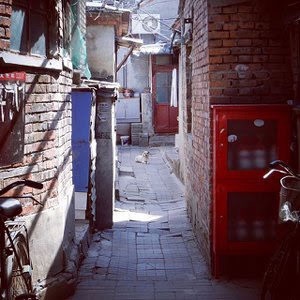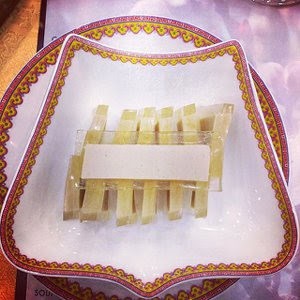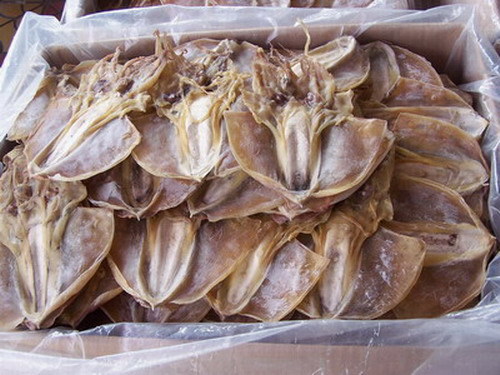Chengdu, Beijing, Lijiang - China
- Food' by Lise Timmer

- Sep 3, 2021
- 6 min read
Updated: Dec 20, 2023
A few years ago I went to China for the first time. I was really looking forward to that and had prepared myself well. To what extent you can do that, because reading and looking at pictures is something different than being there and letting everything sink in. I was short of eyes and ears, my nose was working overtime and my appetite regularly gave up.
In 10 days I had lost some pounds and I missed the simple sandwich and a glass of milk. I was so happy with the small bag of liquorice that I had quickly bought at the airport in the Netherlands. The first city I visited China was Chengdu, Lijiang and Xian. One year later I visited Beijing.
The first two evenings in Chengdu we decided to immediately immerse ourselves in the Chinese cuisine because we were already familiar with it in the Netherlands .. we thought. Nothing could be further from the truth.
The names may have matched, but the dishes looked and smelled and tasted different. So I hadn't prepared myself well enough for that, but after a few days I noticed that at least my nose was getting used to it. I hoped the rest would follow soon!
Chengdu
The meals provided in the restaurants of Chengdu are from the Sichuan cuisine, which is one of the eight schools of Chinese cuisine.
Sichuan specialties are renowned for their spicy flavor, which Szechuan people refer to as "dry spicy", emphasizing that it is distinct from the "wet spicy" characteristic of other styles of cuisine. According to the Sichuanese, the peculiarity of "dry chilli" is that the spices used to concoct a dish of this style consist of a mixture of dry ingredients: peppercorns (black, red or white) dried and crushed, crushed peppers, and the local pepper, called huajiao (literally "flower pepper). According to gourmets and chefs specializing in Sichuan cuisine the characteristic features of "dry chilli" consist of an immediate numbness of tongue and a pleasant spicy aftertaste.
Sichuan cuisine is also renowned for the richness of its flavors. Flavors that all seem to come together in one of the most famous dishes of Sichuan and Chongqing Municipality: Hotpot.
Beside the delicious flavor, there are two other important reasons for Chinese liking hotpot: the first one is that it is a great way to socialize. People gather around the pot, chatting, eating, drinking, and having fun.
There are various of Sichuan hotpots, based on different broths and meats, so Sichuan hot pot suits customers of different preferences: salty, sweet, or sour flavors all are available. If you want to challenge your taste buds, Sichuan hot pot is highly recommended.
Among the most common ingredients that make the richness of these flavors in Sichuan cuisine, we can mention red peppers, garlic, pickled cucumbers and chili pepper with Fuling mustard, fermented bean sprouts from Tongchuan, beans, greens, peanuts, scallion, Pixian bean sauce, Chongqing chili sauce, Zhongba soy sauce, two kinds of vinegars (Baoning cooking vinegar and Sanhui salad vinegar), as well as Sichuan sea salt from the Zigong wells.
Sichuan chefs excel at preparing fried and stir-fried dishes. They are also known for their know-how in the preparation of two kinds of dishes specific to Szechuan cuisine: braised dishes and stews.
Szechuan stew is a method used to make a sauce from soup or broth. The soup or broth is reduced over low heat to the desired consistency, then another, thicker, flavorful sauce is added, such as Pixian bean sauce or Chongqing chili sauce. Soups and broths are often made with marbled meat (or with bones covered in fatty meat), which gives them more flavor. When you reduce them, you get a fatter sauce than those made with milk or cornstarch. This is especially what gives this Szechuan simmered cooking all its flavor.
There is a saying about Sichuan cuisine of which chefs specializing in this style of cuisine, especially those of Chengdu and Chongqing, are particularly proud: "Sichuan cuisine is the only one with one hundred different dishes, each with its own flavor, and the only one to have a dish combining these hundred different flavors ”.
Chengdu also has its own very spicy Hotpot style that only the more adventurous will be able to finish.
Beijing Beijing cuisine is a style of cooking known as Jing (jīng cà), formerly known as Mandarin or Imperial cuisine. Its name is sometimes associated with one of the four great families, grouping together the eight great regional cuisines.
Since Beijing has been the capital for centuries, its cuisine has been influenced by the culinary traditions of all over China, but the one that has exerted the greatest influence is that of Shandong. In turn, Beijing cuisine has influenced Dongbei cuisine in the Northeast. The term "the emperor's kitchen" (yù shàn fáng) is associated with places inside the Forbidden City where thousands of cooks from all over China demonstrated their expertise for the sake of the family. royal and his retinue. So sometimes it is difficult to determine the origin of a dish, but it is possible to make some generalizations about Beijing cuisine.
Wheat is omnipresent because the climate is not conducive to the cultivation of rice.
Noodles and bread, made with wheat flour, make up the starchy portion, or “fàn,” of the meal.
The sheep is very popular due to the influence of the Mongols who conquered China in the 13th century, establishing their capital in Beijing.
Beef is more present than in southern cuisines.The dishes are often snacks, sold in the street or in small stalls. There is a strong taste for roots and vegetables with strong flavors such as bell pepper, garlic, ginger, leek, civet and cilantro. Other ingredients used a lot are dark soybean paste, sesame paste and oil, and fermented tofu (dòu fu).


Lijiang
From Chengdu we flew with an old plane to Lijiang. I can still remember how that went: Get in and go, whether you're in your seat or not, it didn’t matter. They also didn’t use seat numbers, nor did you put your belt on. Not even checked! By the way, you should also be able to bring live chickens, right? Throughout the flight it was a cacophony of voices, people and children coughing and screaming, cackling, burping, farting, barking and snoring. And don’t forget the smells.
Fortunately we got a bottle of water to lubricate the throat. It was an experience I wouldn't have missed! Once on the ground we were out in no time and drove for a few hours through the breathtaking landscape to the old part of Lijiang.
No shortage of dining options. Restaurants inside and outside, street food or just at people's homes. Now that I had just gotten used to it (as far as possible) we were again dealing with a slightly different kind of cuisine. Let's try again I thought.
As I did as a child, I also did it here: take a look in the kitchen. More than logical after what I had already seen during the first culinary experience when we arrived in China, I had to go into a kitchen again. Phew, there they were frying nice looking meat and slicing fish like their lives depended on it. Outside I just saw that a large fish was fetched from the stream in the river (where the bottles of soda were hung to keep them cold) and was clubbed to death. How fresher could you get it! The green, fragrant fresh herbs also lay on a large wooden block to be chopped. Luckily, I thought, it looked reasonably clean and the chefs were young. They must have learned that hygiene and fresh products are important.
At the end of the dinner my young table companion asked what we had eaten (menus in English nowhere to be seen so go by what you see on the table around you and the pictures on the menu).
Thanks for asking little fellow: dog really tastes like chicken...
Lijiang enjoys a favorable geographical position and a mild climate throughout the year. These two conditions together provide the region with a great diversity of natural resources and numerous agricultural products. The Naxi people, who have lived there for generations, develop their own cuisine incorporating many local ingredients. Its dishes, with refreshing flavors and borders of Chinese and Tibetan cuisine, are really worth a visit if you visit this place.
Authentic Naxi cuisine can be found in a number of delicious snacks that are presented all along the streets of Lijiang City. Jidou Liangfen (a kind of chickpea jelly) is one of the most popular snacks among locals and you should absolutely taste it during your visit.
















































































































Comments